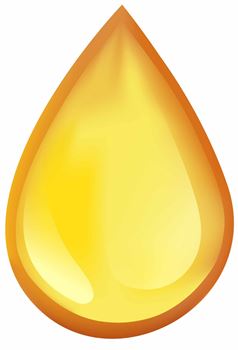
MOSH & MOAH
An increasing number of questions being raised about the use of recycled cardboard for food packaging. Recycled cardboard can contain small amounts of mineral oil, so-called MOSH (Mineral Oil Saturated Hydrocarbon) and MOAH (Mineral Oil Aromatic Hydrocarbons).
Especially these MOAH are suspect, as they can involve health risks. This mineral oil migrates from the cardboard to the food. Also through a possible inner pocket. If this does not form an effective barrier against mineral oil, such as PE foil, then the inner pocket does not provide protection.
How does mineral oil end up in recycled cardboard?
This mineral oil ends up in recycled cardboard, because the newspaper industry still uses ink based on mineral oil. This ink cannot be fully removed during the recycling process. The best solution for avoiding mineral oil in the recycling chain is therefore a complete switch to ink based on vegetable oil. Unfortunately, this is currently not feasible, also because the newspaper industry doesn't want this for technical and financial reasons.
How does mineral oil end up in food?
The constitution of the food, the time it is in the packaging and the storage temperature are also significant. Mainly dry food, such as rice, lentils, pasta or cocoa powder, is most susceptible to this, especially if the food is stored in the packaging for a long time, and has a large contact surface with the cardboard. Foodstuffs stored in the freezer run less risk, because there is little migration in these low temperatures.
What about legislation?
The presence of mineral oil in foodstuffs is therefore undesired, and there is a potential risk. However, whether this small amount also really leads to health damage in people is not quite clear yet. There is also no legislation on the maximum allowed amounts of MOSH and MOAH. In Germany, an update of the fourth draft of the MOSH/MOAH legislation was published in 2020. However, this is still a draft and therefore not yet voted. This draft no longer sets a limit for MOSH, but does set a mandatory functional barrier for MOAH. This means that MOAH migration must remain below the detection limit (i.e. < 0.5 mg/kg food or < 0.15 mg/kg simulant). These limiting values are exceeded several times with recycled cardboard. Direct contact between recycled cardboard and food is therefore not possible.
Is only recycled cardboard susceptible to this?
Not only cardboard packaging can contain mineral oil, so do sack cloths to transport cocoa beans. Mineral oil in foodstuffs can also originate from the lubrication oil and hydraulic oil used in machines for the harvest and production of the foodstuff, but also for the direct treatment of the harvested products with mineral oil containing substances (such as cloth binders and shine agents).
What are the options for avoiding mineral oil in cardboard packaging?
At ducaju we print all our packaging with mineral oil-free ink. Our Quadri series, as well as our pantone colours and our gold and silver metal ink, are completely free from mineral oil, and are based on vegetable oil. Our varnish and glue are also mineral oil-free, and all our lubricants are food grade. We can therefore produce cardboard packaging that is free from mineral oil. It is, however, necessary to use cardboard with only new fibre, so not recycled cardboard fibres. These types of cardboard are GC1 with a white back, GC2 with a cream back, Kraft cardboard and sulphate cardboard.
What if you want to continue to use recycled cardboard for the ecological aspect?
Then an effective barrier is required, an extra inner pocket around the food, for instance, aluminium or some PET foil or more complex compound foil. Or you can use recycled cardboard with a barrier against mineral oil or an intermediate layer in the cardboard that can absorb the mineral oil. These newly developed types of cardboard are available on the market; ducaju can also offer these. If you don't want to run any risk with recycled cardboard, then it's best to choose a cardboard that can absorb the mineral oil, in combination with our mineral oil-free raw materials and production. These are the best solution for avoiding all contamination.

